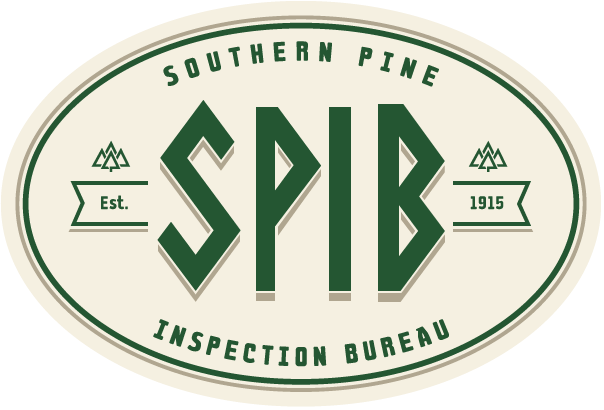
Lumber Grade Marking History: 1933
Introduction
One of the most significant public broadcasts of the early 20th century happened in March of 1933, although nobody at the time would have had any way of knowing that quite yet.
It was then that President Franklin D. Roosevelt, as a result of the Great Depression, addressed the nation for the first time during one of his famous “Fireside Chats.” Just a few days later, on March 15, the Dow Jones Industrial Average rose from 53.84 to 62.10. Despite the fact that the country was still in the throes of the Depression itself, this gain of 15.34% still marks the largest single-day percentage gain for the index in its history.
The economic crisis was also impacting not only the lumber manufacturers but almost ALL other industries and businesses across the country. Because of this, 1933 was also the year that marked the inception of the National Industrial Recovery Act, otherwise known as NIRA.
This was also the year during which the southern pine industry, in association with all other branches of the lumber industry, took an active part in the formulation and negotiation of the Lumber Code of Fair Trade Practices.
Their work was difficult, but their aim was simple. They wanted to create a method of applying price differentials on inferior and substandard products, along with certain types of operations, that lacked manufacturing equipment and sales facilities. They also wanted to bring changes like freight rate equalization for delivered prices on lumber.
In this section, you will find out whether they were successful, and will no doubt experience a few surprises along the way.
1933
The lumber manufacturers and almost all other industries and businesses were in the midst of an economic crisis. The inception of the National Industrial Recovery Act (NIRA NRA) Lumber Code – Lumber Code Authority.
May 24 and 25, 1933. Recommendations of the Conference for lumber and timber products industries held at Chicago. Executive Council of the National Lumber Manufacturers Association arranged a conference with Gen. Hugh S. Johnson, prospective administrator of the Industry Recovery Act.
June 3, 1933. An Emergency Meeting of the National Association of Manufacturers presented a model code of fair competition as a guide to organization planning to cooperate with the Industry Control administration. Entire drafting was that of the lumber industry tentative outline of code, and so accredited. The “model plan” of the organization was that adopted by the Lumber Conference in Chicago on May 24 and 25.
June 10, 1933. The plan was submitted to the administration.
June 16, 1933. The Code of Fair Competition under the National Industrial Recovery Act was approved by executive order of President Roosevelt.
July 13, 1933. Southern pine industry mass meeting.
July 20, 1933. Beginning of public hearings.
August 19, 1933. Code adoption at Washington, D.C. by Gen. Hugh S. Johnson, Administrator, Lumber Code Authority.
August 22, 1933. Lumber Code became effective.
Oct. 14, 1933. The Belcher Code violation case was presented to the administration for the enforceability and court action.
Goldfish bowl conference – HRA’s see everything policies.
Birth control – the prohibition of new manufacturing units.
Grade marking – destined for inclusion in Code regulations – subject temporarily shoved in the background by other Code activities.
The Southern pine industry, in conjunction with all other branches of the lumber industry, took an active part in the formulation and negotiation of the Lumber Code of Fair Trade Practices. The Southern Pine Association because of previous experience and industry preparation administered the code in the Southern Pine Division. The developments for both were:
1. Method of applying price differentials on inferior and substandard products and to certain types of operations that lacked manufacturing equipment and sales facilities.
2. The assessment on all mills under the Code for use in administering and enforcing the Code in the Southern Pine Division was increased from 15¢ to 20¢ per M based on monthly shipments.
3. SPA association subscriber assessment was increased from 3¢ to 5¢ per M – one-half to be used for trade promotion and the other half for various association activities.
4. Freight rate equalization for delivered prices on lumber was undertaken.
5. The Conversation Committee designed recommendations to affect forest management and sustained yield of privately owned timberland in the Southern Pine Division.
Many problems became apparent and real under the Lumber Code administration in the southern pine industry – all could and would be solved, in due course, with the proper application of correctives. Strict adherence to the Code requirements of the Southern Pine Division was maintained. Advantages and benefits for the industry embraced by purposes for which the Code was established, were in line for achievement. Among these were:
1. Manufacturers were given the opportunity to organize, regulate, and control their industry and its pertinent affairs.
2. Manufacturers had an opportunity to apply remedies for the disastrous conditions and burdens under which the lumber industry had, for years, suffered.
3. The solution of problems peculiar to the southern pine industry:
a. Divisional production quotes.
b. Equitable minimum cost production prices.
c. Fairtrade practices.
d. Labor conditions.
4. Prices – protection given for southern pine.
5. The solution of problems peculiar to the South.
a. Customary maximum hours of labor.
b. Customary minimum wages.
c. Low productivity per manpower unit.
d. Comparative value, character, and size of timber growth.
e. Predominately low costs of living.
